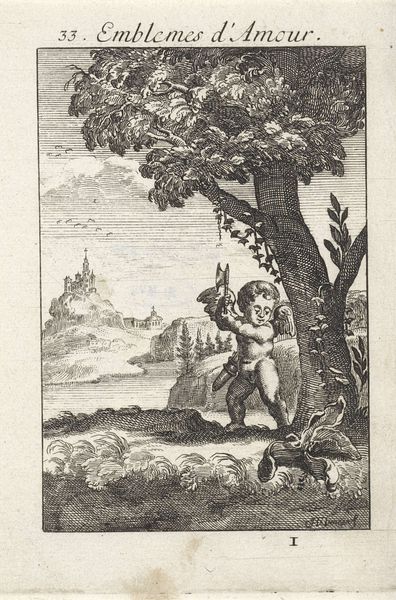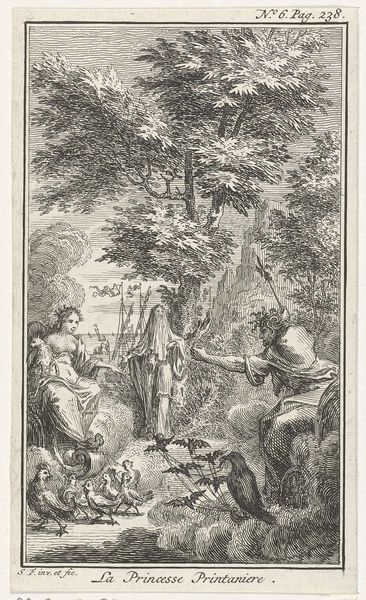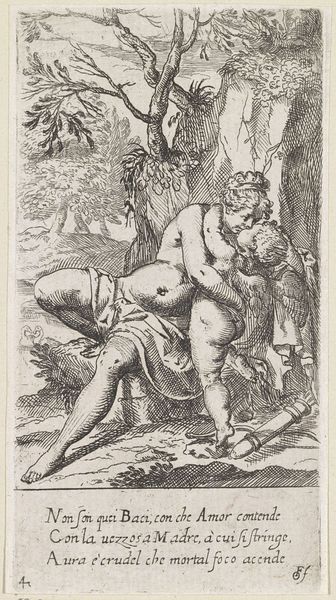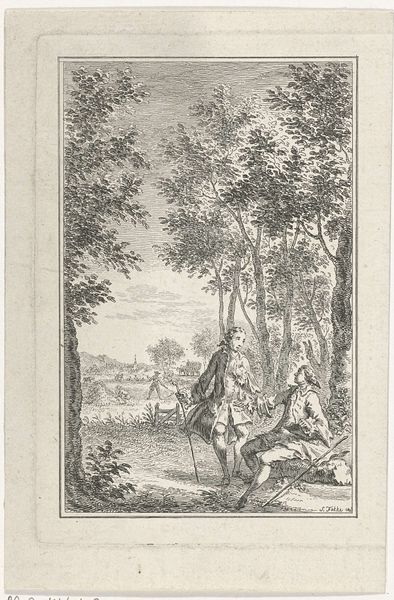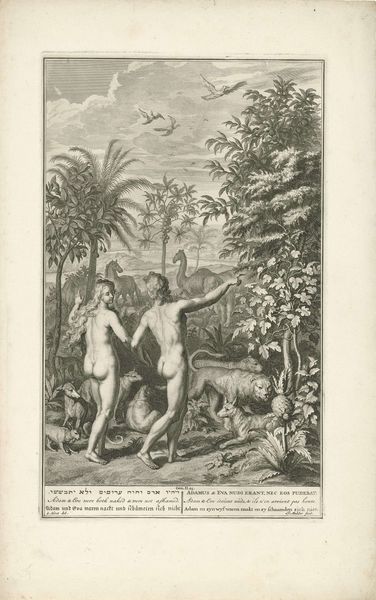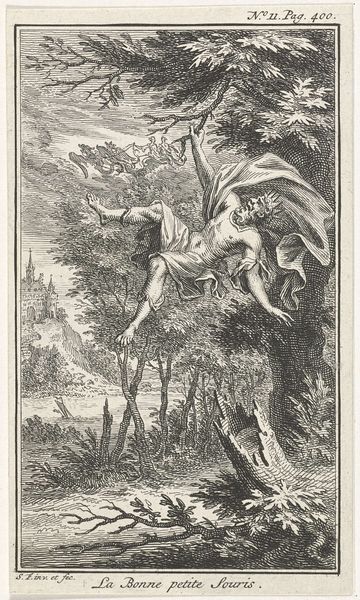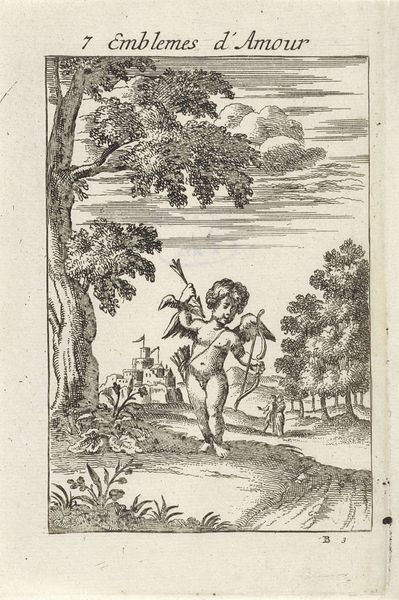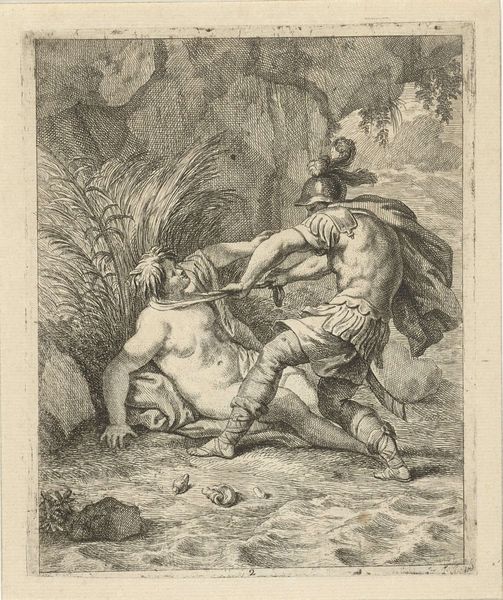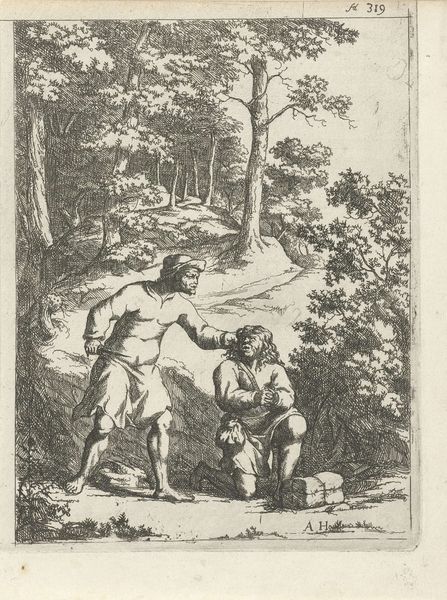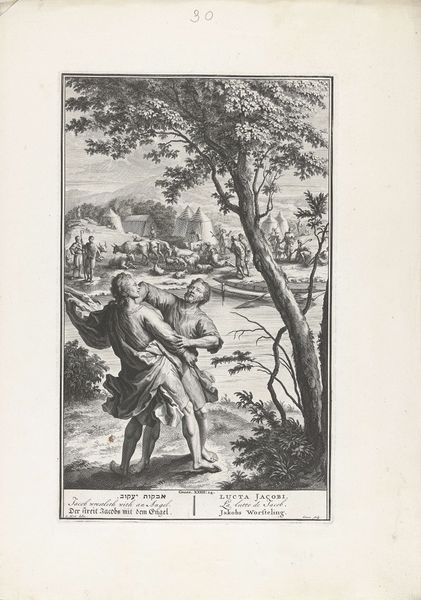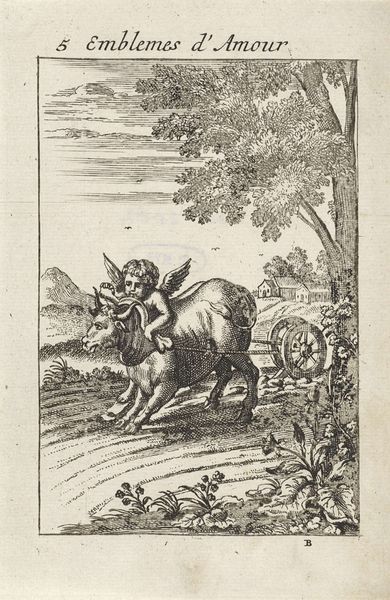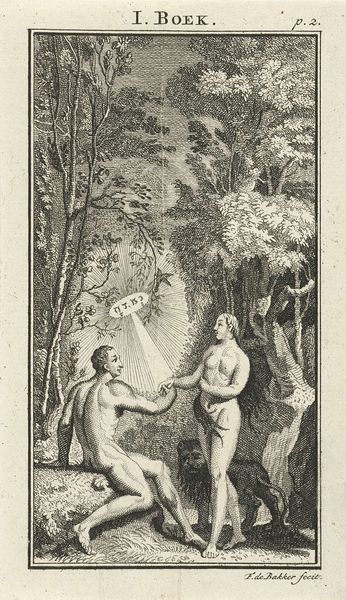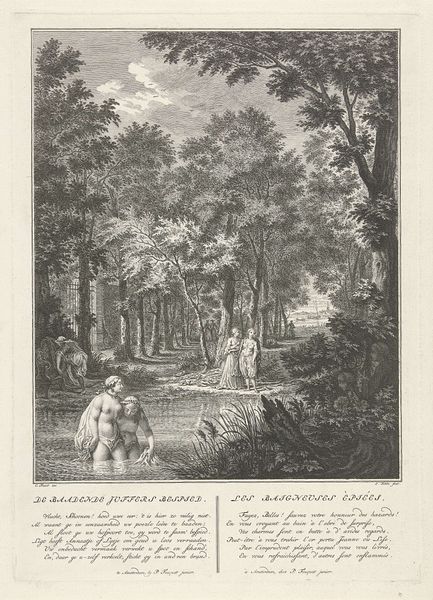
Dimensions: height 150 mm, width 93 mm
Copyright: Rijks Museum: Open Domain
Editor: This is "Gelaarsde kat" or "Puss in Boots," a print by Simon Fokke, dating from 1754 to 1784. The cat looks… a bit unsettling, standing there with human posture. What do you see in this piece beyond a children's tale? Curator: Beyond the fairytale surface, this engraving is steeped in the social and political anxieties of the 18th century. Consider the anthropomorphism: the cat in boots. Animals acting as humans was often a vehicle for satire, a way to critique social structures without directly challenging those in power. Editor: So, the cat isn’t just a charming character? Curator: Exactly. Think about who had power at the time. Aristocrats, often seen as detached from the struggles of common people. Could the cat, dressed in boots, be a caricature of the elite? And who does the cat benefit in the story? It's the seemingly powerless miller's son. We could read this as a commentary on class, where cunning and trickery, like the cat's, become tools for upward mobility. Also, how might its landscape setting further inform our understanding of societal structures? Editor: That’s fascinating. I hadn't considered the class dynamics at play. I was so focused on the fantasy element. Curator: And that fantasy element is crucial! Fairy tales often serve as moral instruction, but they can also question established norms. Does the cat represent a disruption of the natural order? Is Fokke hinting at the societal upheavals to come? Editor: Looking at it that way, the image feels less whimsical and more… subversive. It is really quite complex. Curator: It layers so much into something that appears at first to be a mere children's illustration. Considering it in this light prompts a deeper engagement with art. Editor: Absolutely, I am now looking at it from such a new point of view, which is so amazing!
Comments
No comments
Be the first to comment and join the conversation on the ultimate creative platform.
